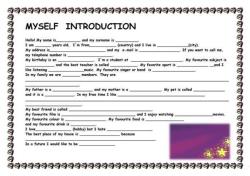What are the six characteristics of language?
Linguists identify several key characteristics of language that distinguish it as a unique and complex system of communication. Here are six fundamental characteristics of language:
Arbitrariness:
- The relationship between the sound of a word (or sign in sign languages) and its meaning is generally arbitrary. There is no inherent connection between the sounds/visual symbols and the concepts they represent. For example, there's nothing about the word "cat" that inherently means a furry, four-legged animal—it's an arbitrary association.
Productivity (Generativity):
- Language is a highly creative and generative system. Speakers can produce an infinite number of new sentences to convey novel ideas. This creativity is achieved through the combination of a finite set of linguistic elements (words, morphemes, and syntax) in novel ways.
Displacement:
- Language allows us to talk about things that are not present in the immediate environment or even things that do not exist. This characteristic of displacement enables communication about past, future, hypothetical, or abstract concepts.
Duality of Patterning:
- Language has a hierarchical structure with multiple levels of organization. At the surface level, there are individual sounds (phonemes); at a higher level, these sounds combine to form meaningful units (morphemes); and at an even higher level, these morphemes combine to create complex structures (sentences). This duality of patterning allows for a rich and varied linguistic output.
Cultural Transmission:
- Language is passed down from generation to generation through cultural transmission. It is learned by individuals as part of their socialization process, typically from parents, caregivers, and the surrounding community. While there are innate aspects to language acquisition, the specific language spoken by an individual is culturally determined.
Structuredness (or Systematicity):
- Language is highly structured and systematic. It follows specific rules and patterns, both in terms of sound (phonology), meaning (semantics), and grammar (syntax). The rules governing language use are shared within a linguistic community, allowing for mutual intelligibility.
These characteristics collectively contribute to the complexity and versatility of language as a means of communication. It's important to note that these traits are not exclusive to spoken languages; they also apply to signed languages used by Deaf communities around the world.
Sure, here is a summary of the core characteristics of language, along with their implications for language acquisition, usage, and evolution:
Core Characteristics of Language
Productivity: Language allows us to generate an infinite number of new sentences and express an endless range of thoughts and ideas. This ability to produce novel expressions is what sets human language apart from other communication systems.
Arbitrariness: The relationship between the sounds or symbols of a language and their meaning is arbitrary. There is no inherent connection between the word "dog" and the animal it represents. This arbitrariness allows for flexibility and adaptability in language.
Duality: Language exhibits duality, meaning that it has both sound or symbol (form) and meaning (content). The form of language is the physical manifestation of words, while the content is the meaning or concept associated with those words.
Displacement: Language allows us to talk about things that are not physically present, such as past events, future plans, or hypothetical situations. This ability to displace allows us to communicate about the world beyond our immediate surroundings.
Cultural Transmission: Language is learned and passed down from generation to generation through cultural transmission. It is not innate or biologically determined. This cultural transmission allows for the evolution and diversification of languages over time.
Learnability: Children have an innate ability to learn language, even without explicit instruction. This learnability is a remarkable characteristic of human language and suggests that we are biologically predisposed to acquire language.
Distinguishing Human Language from Other Communication Systems
The core characteristics of language distinguish it from other communication systems in several ways:
Productivity: The ability to generate an infinite number of new expressions is unique to human language. Animal communication systems are typically limited to a finite set of signals or gestures.
Arbitrariness: The arbitrary relationship between sounds or symbols and their meaning allows for flexibility and adaptability in human language. In contrast, animal communication systems often have a direct or iconic relationship between signals and their meaning.
Duality: The duality of language allows us to express both form (sound or symbol) and content (meaning), enabling us to communicate complex thoughts and ideas. Animal communication systems typically lack this duality and are limited to conveying basic information.
Displacement: The ability to talk about things that are not physically present is a powerful feature of human language. Animal communication systems are primarily focused on the immediate environment and lack the ability to refer to past, present, or future events.
Cultural Transmission: The cultural transmission of language allows for the accumulation of knowledge and the evolution of languages over time. Animal communication systems are largely instinctual and do not undergo the same level of cultural transmission.
Learnability: The innate ability of children to learn language suggests that we are biologically predisposed to acquire this complex skill. Animal communication systems, on the other hand, are typically learned through imitation and reinforcement rather than an innate language-learning mechanism.
Implications for Language Acquisition, Usage, and Evolution
The core characteristics of language have profound implications for language acquisition, usage, and evolution:
Language Acquisition:
Productivity and duality enable children to learn and generate an infinite number of new expressions, even without explicit instruction.
Arbitrariness and displacement allow for flexibility in language learning and the ability to communicate about the past, present, and future.
Cultural transmission ensures that language is passed down from generation to generation, enabling the accumulation of knowledge and cultural identity.
Language Usage:
Productivity and duality allow for creativity, nuance, and the expression of complex thoughts and ideas in human communication.
Arbitrariness and displacement enable us to talk about things that are not physically present, expand our understanding of the world, and engage in storytelling and imagination.
Cultural transmission leads to linguistic diversity and variations in language usage across different cultures and communities.
Language Evolution:
Productivity and duality allow for language to adapt and change over time, incorporating new vocabulary and expressions to reflect new concepts and experiences.
Arbitrariness and displacement enable language to evolve independently of its referents, allowing for the emergence of new meanings and the adaptation of language to changing social and cultural contexts.
Cultural transmission ensures that language evolution is a continuous process, driven by the cultural interactions and innovations of language users across generations.












